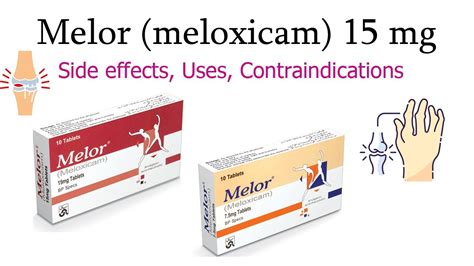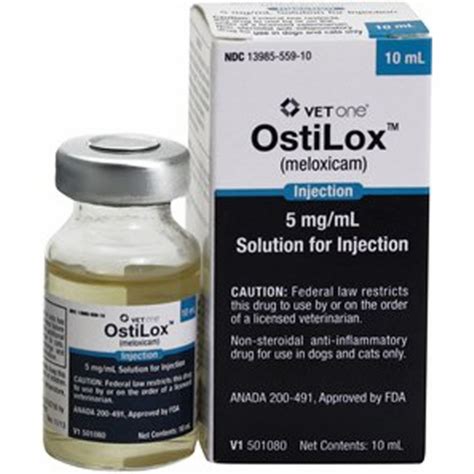Intro
Discover 5 uses of Meloxicam, a potent NSAID, for pain relief, inflammation reduction, and managing conditions like arthritis, osteoarthritis, and rheumatoid arthritis, with benefits for joint health and anti-inflammatory responses.
The importance of understanding medication uses cannot be overstated, especially when it comes to drugs like Meloxicam. Meloxicam is a nonsteroidal anti-inflammatory drug (NSAID) that has been widely used for its anti-inflammatory, analgesic, and antipyretic properties. It is crucial for patients and healthcare providers to be well-informed about the various applications of Meloxicam to ensure its safe and effective use. In this article, we will delve into the different uses of Meloxicam, exploring its benefits, working mechanisms, and key information related to its application.
Meloxicam has been a staple in the treatment of various conditions, primarily due to its ability to reduce inflammation and alleviate pain. Its mechanism of action involves the inhibition of cyclooxygenase (COX) enzymes, which are responsible for the production of prostaglandins. Prostaglandins are hormone-like substances that cause pain, inflammation, and fever. By blocking the production of these substances, Meloxicam provides relief from symptoms associated with inflammatory conditions.
The versatility of Meloxicam is evident in its wide range of applications. From treating arthritis to managing pain and inflammation in other conditions, Meloxicam has proven to be a valuable medication in modern healthcare. Its use extends beyond the treatment of human conditions, as it is also applied in veterinary medicine to treat similar inflammatory and painful conditions in animals. Understanding the different uses of Meloxicam is essential for maximizing its therapeutic benefits while minimizing potential side effects.
Overview of Meloxicam Uses

Meloxicam is primarily used to treat osteoarthritis, rheumatoid arthritis, and juvenile rheumatoid arthritis. Its anti-inflammatory and analgesic properties make it an effective medication for reducing joint pain and swelling associated with these conditions. Additionally, Meloxicam is used to treat ankylosing spondylitis, a type of arthritis that affects the spine. Its ability to reduce inflammation and relieve pain makes it a valuable treatment option for patients suffering from these debilitating conditions.
Benefits of Meloxicam for Arthritis
The benefits of Meloxicam for arthritis patients are multifaceted. Not only does it provide relief from pain and inflammation, but it also helps improve physical function and overall quality of life. By reducing joint inflammation, Meloxicam can slow down the progression of the disease, potentially preventing further joint damage. Moreover, its analgesic properties help manage chronic pain, which is a common symptom of arthritis.Meloxicam for Pain Management

Beyond its application in treating arthritis, Meloxicam is also used for managing pain and inflammation in other conditions. It is often prescribed for short-term treatment of moderate to severe pain, including dental pain, menstrual cramps, and pain associated with surgery or injury. Meloxicam's ability to inhibit COX enzymes makes it an effective pain reliever, providing quick and sustained relief from painful symptoms.
Working Mechanism of Meloxicam for Pain Relief
The working mechanism of Meloxicam for pain relief involves the inhibition of COX-2 enzymes, which are primarily responsible for the production of prostaglandins that cause pain and inflammation. By selectively blocking COX-2 enzymes, Meloxicam reduces the production of these pain-causing substances, thereby providing relief from pain. This selective inhibition also minimizes the risk of gastrointestinal side effects, which are commonly associated with non-selective NSAIDs.Veterinary Use of Meloxicam

In addition to its human applications, Meloxicam is also used in veterinary medicine to treat pain and inflammation in animals. It is commonly prescribed for dogs, cats, and horses to manage osteoarthritis, surgical pain, and other inflammatory conditions. The use of Meloxicam in animals is based on its proven safety and efficacy in reducing pain and inflammation, thereby improving the quality of life for pets and livestock.
Benefits of Meloxicam for Animals
The benefits of Meloxicam for animals are similar to those observed in humans. It provides effective relief from pain and inflammation, improving mobility and overall well-being. In dogs, for example, Meloxicam is used to treat osteoarthritis, reducing joint pain and inflammation, and improving their ability to perform daily activities. In cats, it is used to manage pain associated with surgery, injury, or chronic conditions, providing comfort and relief.Administration and Dosage of Meloxicam

The administration and dosage of Meloxicam vary depending on the condition being treated and the patient's response to the medication. It is available in various forms, including tablets, capsules, and injectable solutions. For osteoarthritis, the typical dosage is 7.5 mg to 15 mg once daily. For rheumatoid arthritis, the dosage may be higher, ranging from 15 mg to 30 mg daily. It is essential to follow the prescribed dosage and administration instructions to minimize the risk of side effects and ensure the safe use of Meloxicam.
Key Considerations for Meloxicam Use
When using Meloxicam, it is crucial to consider several key factors to ensure its safe and effective use. These include: * Starting with the lowest effective dose to minimize side effects * Monitoring kidney and liver function, as Meloxicam can affect these organs * Avoiding use in patients with a history of gastrointestinal ulcers or bleeding * Using the medication for the shortest duration necessary to treat the condition * Following the prescribed dosage and administration instructionsPotential Side Effects of Meloxicam

Like all medications, Meloxicam can cause side effects, some of which may be serious. Common side effects include gastrointestinal symptoms such as nausea, vomiting, and diarrhea, as well as dizziness, headache, and fatigue. More severe side effects may include gastrointestinal ulcers, kidney damage, and increased risk of heart attack or stroke. It is essential to be aware of these potential side effects and to seek medical attention if they occur.
Minimizing the Risk of Side Effects
To minimize the risk of side effects when using Meloxicam, it is recommended to: * Take the medication with food to reduce gastrointestinal irritation * Avoid using Meloxicam with other NSAIDs or aspirin * Monitor blood pressure and kidney function regularly * Report any signs of side effects to a healthcare provider promptlyConclusion and Future Directions

In conclusion, Meloxicam is a versatile medication with a wide range of applications in treating inflammatory and painful conditions. Its benefits extend beyond human healthcare, as it is also used in veterinary medicine to improve the quality of life for animals. As research continues to uncover the full potential of Meloxicam, it is essential to stay informed about its uses, benefits, and potential side effects. By doing so, we can ensure the safe and effective use of this valuable medication.
We invite you to share your thoughts and experiences with Meloxicam in the comments below. Have you or a loved one used Meloxicam for pain management or to treat an inflammatory condition? What were your experiences, and what did you learn from using this medication? Your insights can help others better understand the benefits and potential drawbacks of Meloxicam, contributing to a more informed and supportive community.
What is Meloxicam used for?
+Meloxicam is used to treat osteoarthritis, rheumatoid arthritis, and juvenile rheumatoid arthritis, as well as to manage pain and inflammation in other conditions.
How does Meloxicam work?
+Meloxicam works by inhibiting COX enzymes, which are responsible for the production of prostaglandins that cause pain, inflammation, and fever.
What are the potential side effects of Meloxicam?
+Potential side effects of Meloxicam include gastrointestinal symptoms, dizziness, headache, and fatigue, as well as more severe side effects such as gastrointestinal ulcers and increased risk of heart attack or stroke.
